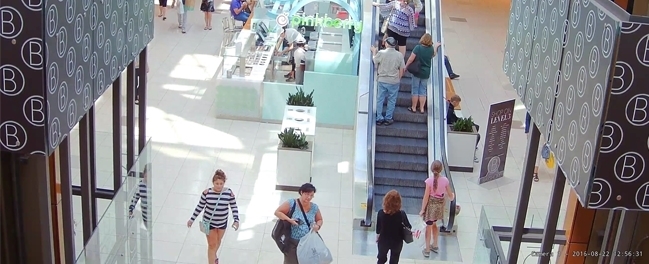
Unfortunately, we have recently encountered numerous terrorist massacres. Attacks such as Atatürk Airport, Reina, Ankara Station, Beşiktaş Stadium, Melikgazi, Suruç, Şahinbey etc. were conducted with persons or vehicles.
Many terrorists are scouting the area where they will attack days or even months before the attack by looking at the weaknesses of the electronic and physical security systems and planning.
Anti-terrorism experts state that the target opportunities of terrorist incidents are crowded train stations, airports, stadiums and shopping malls. It is easily predicted that these places are the places where terrorists can conduct incidents without being noticed and achieve maximum media impact. Terrorists buy and use high technology and high intelligence with illicit monies.
Most of the terrorist opportunities that fit the above profile are tried to be eliminated by CCTV monitoring.
Most of the CCTV systems that are currently used are ineffective. Many of the cameras used are not positioned correctly and are facing in the wrong directions. Moreover, many of them are old models or have very low resolution. Many enterprises are installing systems solely for following the recommendations of the law enforcement authorities.
Undoubtedly, a well-designed video surveillance system will help in anti-terrorism by providing monitoring, surveillance and intelligence gathering to ensure the assessment of a potential incident. With the use of CCTV, many processes can be quickly resolved in post-incident evidence collection and forensic analysis.
From a technical point of view, two main issues need to be addressed: Camera position and technology used.
In the 2000s, the CCTV Systems was a new field for Turkey and unfortunately, due to the lack of design and implementation experience, most of them were poorly planned and designed. Although the CCTV and Video Control industry has grown at an extraordinary rate, the problem has been increased more by the fact that it remains largely unregulated and that there are few conscious CCTV companies. Today, certain first-class companies operate in the sector, but unfortunately, there are many companies that bring the industry to the point of decay.
The camera locations in a good design should be determined in consultation with the police, gendarmerie, telecommunication company, electricity administration, municipality, local authority and CCTV experts.
However, the users often have insufficient knowledge of their expectations from the cameras. What do you want to see? And in which detail? Is it a system designed to deter, prevent, detect or prosecute? Will it work proactively, will it work reactively, or both? Is the system continuously manned or unmanned and used after an incident has been reported to inform about the incident? What is the scope of the system (crime prevention and detection, public safety, etc.)?
One of the most important areas to be addressed is the viewing of live images. A CCTV operator who views only two monitors starts to miss 45% of the data after the 10th minute and misses 95% of the incident data after the 20th minute.
Using IP cameras with integrated video analysis on camera, as well as central software such as smart motion and audio-detecting video analytics, can make images more effective and less likely to fail.
will provide the opportunity to be quick and effective in crime and fight against the crime.
Regardless of whether the CCTV systems are anti-crime or anti-terrorist, it should be said that city buildings should have cameras installed to monitor both the building and its surroundings, and that these systems should include the integration of many systems.
Integrated cooperation is required not only in the buildings at the city centers, but also in the beaches, borders, border crossings, customs gates, aviation, maritime, migrant management, disaster and emergency management. For this purpose, standardization should be carried out and integrated systems should be established.